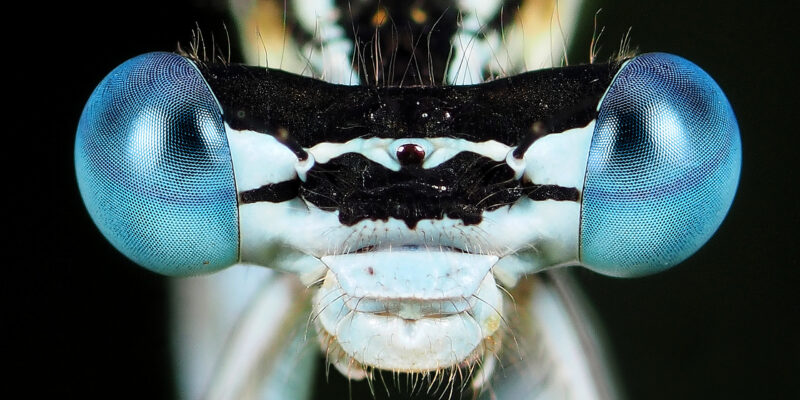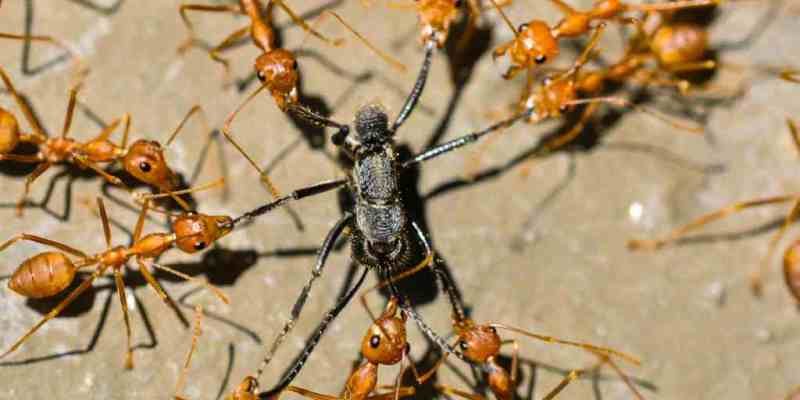Journal Prizes: Best Article by an Early Career Entomologist
Our journal awards, given out by each of our seven journals, are designed to celebrate excellent research by Early Career Entomologists in the specific fields covered by our journal portfolio.
The Royal Entomological Society has a history of awarding best paper prizes, and from 2024 the RES journal awards honour early career entomologists publishing in our seven journals.
We hope that recognising the best work led by early career entomologists in our journals we can support the career development of these authors and highlight the fantastic research published in RES journals.
Eligibility
Lead, early career authors of articles published in the last volume of RES journals are eligible for the prizes. Early career is defined as researchers within ten years of completing their undergraduate degree or with less than ten years working in entomology in any capacity, with or without a degree. Time for career breaks is not counted in the 10 year time period.
Criteria
Editors assess all eligible articles based on whether they are topical, have a broad interest, are well communicated and in an area of interest for the journal.
Rewards
The winner receives:
- A prize of £200
- Registration covered to attend Ento, the Royal Entomolocial Society’s annual conference
- A year’s free membership to the Royal Entomological Society

Details and previous winners of the RES Journal Awards
Winners – for best papers with Early Career Entomologists as lead authors published during 2021-2023
Read more about this year’s winners here, and read all the 2021-2023 winning and highly commended articles in this Virtual Issue.
Agricultural and Forest Entomology
Kae Natsume, Shouta Hayashi, Tadashi Miyashita
Ants are effective pollinators of common buckwheat Fagopyrum esculentum. Agricultural and Forest Entomology, 24 (3), 446-452, 2022.
Benito Cortés-Rivas, Cecilia Smith-Ramirez, Víctor Hugo Monzón, José Neiva Mesquita-Neto
Native bees with floral sonication behaviour can achieve high-performance pollination of highbush blueberry in Chile. Agricultural and Forest Entomology, 25 (1), 91-102, 2023
Ecological Entomology
Erez Buyukyilmaz, Michelle Tseng
Developmental temperature predicts body size, flight, and pollen load in a widespread butterfly. Ecological Entomology, 47 (5), 872-882, 2022.
Tabea Streicher, Anja Tehel, Simon Tragust, Robert J. Paxton
Experimental viral spillover can harm Bombus terrestris workers under field conditions. Ecological Entomology, 48 (1), 81-89, 2023.
Insect Conservation and Diversity
Janderson Batista Rodrigues Alencar, Claudio Ruy Vasconcelos da Fonseca, Daniel Magnabosco Marra, Fabrício Beggiato Baccaro
Windthrows promote higher diversity of saproxylic beetles (Coleoptera: Passalidae) in a Central Amazon forest. Insect Conservation and Diversity, 15 (1), 1-8, 2022.
Lindsey Kemmerling, Annabelle C. McCarthy, Cameron S. Brown, Nick M. Haddad
Butterfly biodiversity increases with prairie strips and conservation management in row crop agriculture. Insect Conservation and Diversity, 16 (6), 828-837, 2023.
Insect Molecular Biology
Vilde Leipart,, Øyvind Enger, Diana Cornelia Turcu, Olena Dobrovolska, Finn Drabløs, Øyvind Halskau, Gro V. Amdam
Resolving the zinc binding capacity of honey bee vitellogenin and locating its putative binding sites. Insect Molecular Biology, 31 (6), 810-820, 2022.
Jianfeng Qiu, Taiming Dai, Cheng Luo, Wenzhao Cui, Kai Liu, Jianglan Li, Yanghu Sima, Shiqing Xu
Circadian clock regulates developmental time through ecdysone and juvenile hormones in Bombyx mori. Insect Molecular Biology, 32 (4), 352-362, 2023.
Medical and Veterinary Entomology
Caroline Wanjiku, D. P Tchouassi, C. L Sole, C. Pirk, B. Torto
Plant sugar feeding patterns of wild-caught Aedes aegypti from dengue endemic and non-endemic areas of Kenya. Medical and Veterinary Entomology, 35 (3), 417-425, 2021.
David López-Peña, E. M. García-Roger, Á. Lis-Cantín, R. Jiménez-Peydró
Environmental drivers of breeding sites in blackfly species of medical and veterinary importance in eastern Spain. Medical and Veterinary Entomology, 36 (1), 97-112, 2022.
Jean Marc Tsagomo Ngoune, Flobert Njiokou, Alexis Dziedziech, Valerie Rofidal, Sonia Hem, Anne Geiger
Protein abundance in the midgut of wild tsetse flies (Glossina palpalis palpalis) naturally infected by Trypanosoma congolense s.l.. Medical and Veterinary Entomology, 37 (4), 723-736, 2023.
Physiological Entomology
Lucas J Kirschman, Lindsey Dewey, Andre Gregory
Immune function does not trade-off with reproductive effort in a semelparous wolf spider with parental care. Physiological Entomology, 47 (1), 38-45, 2022.
Reyard Mutamiswa, Vimbai Lisa Tarusikirwa, Casper Nyamukondiwa, Ross N. Cuthbert, Frank Chidawanyika
Thermal stress exposure of pupal oriental fruit fly has strong and trait-specific consequences in adult flies. Physiological Entomology, 48 (1), 35-44, 2023.
Systematic Entomology
Dominic A Evangelista,, Sabrina Simon, Megan M. Wilson, Akito Y. Kawahara, Manpreet K. Kohli, Jessica L. Ware, Benjamin Wipfler, Olivier Béthoux, Philippe Grandcolas, Frédéric Legendre
Assessing support for Blaberoidea phylogeny suggests optimal locus quality. Systematic Entomology, 46 (1), 157-171, 2021.
Mukta Joshi, Marianne Espeland, Vlad Dincă, Roger Vila, Mohadeseh S. Tahami, Lars Dietz, Christoph Mayer, Sebastian Martin, Leonardo Dapporto, Marko Mutanen
Delimiting continuity: Comparison of target enrichment and double digest restriction-site associated DNA sequencing for delineating admixing parapatric Melitaea butterflies. Systematic Entomology, 47 (4), 367-654, 2022.
Tomochika Fujisawa, Víctor Noguerales, Emmanouil Meramveliotakis, Anna Papadopoulou, Alfried P. Vogler
Image-based taxonomic classification of bulk insect biodiversity samples using deep learning and domain adaptation. Systematic Entomology, 48 (3), 387-401, 2023.

Winners – for best papers published during 2019-21
Read more about this year’s winners here, and read all the 2021 winning articles in this Virtual Issue
Agricultural and Forest Entomology
Kiran J. Horrocks, Darren Ward & David M. Suckling
Can natural enemies of current insect pests provide biotic resistance to future pests?
Agricultural and Forest Entomology, 20 (3), 390-401, 2018.
Ecological Entomology
Elia Guariento, Wolfgang Wanek & Konrad Fiedler
Ecological Entomology, 43 (2), 168-181, 2018.
Insect Conservation and Diversity
Douglas H. Boyes, Darren M. Evans, Richard Fox, Mark, S. Parsons & Michael J. O. Pocock
Insect Conservation and Diversity,11 (1), 1-12, 2018.
Insect Molecular Biology
Chaverra-Rodriguez, D., Dalla Benetta, E., Heu, C.C., Rasgon, J.L., Ferree, P.M. and Akbari, O.S.
Insect Molecular Biology, 27 (3), 352-364, 2018.
Medical and Veterinary Entomology
Ronai, I., Tufts, D.M. and Diuk-Wasser, M.A.
Medical and Veterinary Entomology, 31, 365-372, 2017.
Physiological Entomology
Naoki Matsuda Takashi Kanbe Jun Endo Shin-Ichi Akimoto & Hideharu Numata
Suppression of autumnal sexual morph production in spring by a seasonal timer in an aphid
Physiological Entomology, 42, 181-190, 2017.
Systematic Entomology
Sean D. Schoville, Tierney C. Bougie, Roman Y. Dudko, Matthew J. Medeiros
Has past climate change affected cold-specialized species differentially through space and time?
Systematic Entomology, 42, 267-287, 2017.

Winners – for best papers published during 2018-19
Agricultural and Forest Entomology
Xiaohong Li, Michael Garvey, Ian Kaplan, Baoping Li, Juli Carrillo
Agricultural and Forest Entomology, 20 (3), 390-401, 2018.
Ecological Entomology
Dave Goulson, Steph O’Connor, Kirsty J. Park
The impacts of predators and parasites on wild bumblebee colonies
Ecological Entomology, 43 (2), 168-181, 2018.
Insect Conservation and Diversity
Laurence Packer, Spencer K. Monckton, Thomas M. Onuferko, Rafael R. Ferrari
Validating taxonomic identifications in entomological research
Insect Conservation and Diversity,11 (1), 1-12, 2018.
Insect Molecular Biology
Y. Zhang, K. Feng, J. Hu, L. Shi, P. Wei, Z.Wu, G. Shen, M. Li, Q. Wu, L. He
Insect Molecular Biology, 27 (3), 352-364, 2018.

Winners – for best papers published during 2017-18
Medical and Veterinary Entomology
M. Brustolin, S. Talavera, A. Nunez, C. Santamaria, R. Rivas, N. Pujol, M. Valle, M. Verdun, A. Brun, N. Pages and N. Busquets
Medical and Veterinary Entomology, 31, 365-372, 2017.
Physiological Entomology
Lily M. Thompson, Trevor M. Faske, Nana Banahene, Dominique Grim, Salvatore J. Agosta, Dylan Parry, Patrick C. Tobin, Derek M. Johnson and Kristine L. Grayson
Physiological Entomology, 42, 181-190, 2017.
Systematic Entomology
Camiel Doorenweerd, Erik J. Van Nieukerken and Robert J. B. Hoare
Systematic Entomology, 42, 267-287, 2017.

Winners – for best papers published during 2016-17
Agricultural and Forest Entomology
Sarah L. Facey, David B. Fidler, Rhiannon C. Rowe, Lisa M. Bromfield, Sabine S. Nooten, Joanna T.Staley, David S. Ellsworth and Scott N. Johnson
Atmospheric change causes declines in woodland arthropods and impacts specific trophic groups.
Agricultural and Forest Entomology, 19 (1), 101-112, 2017.
Ecological Entomology
Tom R. Bishop, Mark P. Robertson, Berndt J. Van Rensburg and Catherine L. Parr
Ecological Entomology, 42 (2), 105-114, 2017.
Insect Conservation and Diversity
Alessandro Campanaro, Livia Zapponi, Sönke Hardersen, Marcos Mendez, Nida Al Fulaij, Paolo Audisio, Marco Bardiani, Giuseppe M. Carpaneto, Serena Corezzola, Francesca Della Rocca, Deborah Harvey, Colin Hawes, Marcin Kadej, Jerzy Karg, Markus Rink, Adrian Smolis, Eva Spencer, Arno Thomaes, Ilaria Toni, Al Vrezec, Agnese Zauli, Michelle Zilioli and Stefano Chiari
A European monitoring protocol for the stag beetle, a saproxylic flagship species.
Insect Conservation and Diversity, 9 (6), 574-584, 2016.
Insect Molecular Biology
K. Cappelle, C.F.R de Oliveira, B.Van Eynde, O. Christiaens and G. Smagghe
Insect Molecular Biology, 25 (3), 315-323, 2016.





